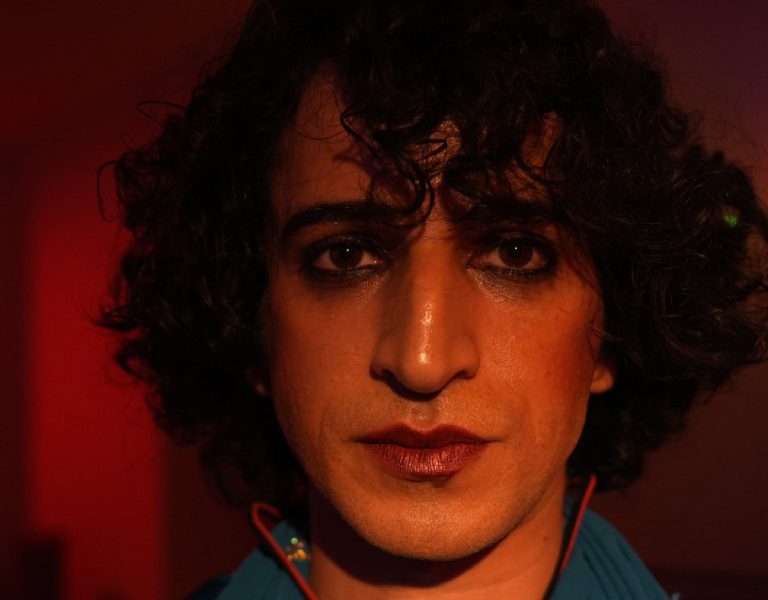THE TRUTH AND TRAGEDY OF WAR
James Friend ASC BSC and camera operator Danny Bishop ACO Assoc. BSC SOC share how they tackled challenging conditions to retell the anti-war story of All Quiet on the Western Front and why they believe the tale can inform a new generation about the reality and futility of war during a time of conflict in Europe.
There has never been a more relevant time for audiences to experience the retelling of All Quiet on the Western Front, according to the filmmakers who have brought it to the screen this year. Based on German World War I veteran, Erich Maria Remarque’s book, the film depicts war’s impact on young men, seen from the perspective of Paul Bäumer, a volunteer soldier stationed behind the front lines in the last weeks of the battle. Having been convinced to enlist, Paul and his young German classmates discover the horrors of the battlefield are far removed from the romanticised version of war they had been sold.
When cinematographer James Friend ASC BSC and camera operator Danny Bishop ACO Assoc. BSC SOC were filming the Netflix production, war had not yet broken out in Ukraine. Now the world has changed, and Bishop feels the time is right to release the anti-war film which brings to the fore the disillusionment of that period through a realistic and hard-hitting depiction of the atrocities that occurred.

As a camera operator, he feels privileged to experience the story from a unique viewpoint. “This was even more impactful when shooting this film,” he says. “I thought about the poor young men being sent to fight, and what for? The juxtaposition between the ridiculous misleading generals and the young men they were sending to their deaths is so powerful and unjust.”
Friend has also never in his career experienced a more poignant production. When grading the film, the Ukrainian war was, and remains, at its height and he “couldn’t help but empathise with what’s happening now in Europe while watching the film’s narrative play out, especially at the end, when you really realise the tragedy of the story.”
The cinematographer believes the film should be used as a tool to inform society and convey an important message “because war is the most destructive force.”
All Quiet on the Western Front was one of the first books to resonate with Friend at school because although not entirely based on real events, the narrative was shaped by veteran Remarque’s first-hand experiences. The 1930 and 1979 film versions of the story are “pieces of cinema history” in Friend’s eyes and impressive due to what was achieved with the limited resources and technology of the time. “But the film we’ve made isn’t a direct remake of the previous movies, it’s another retelling of the book. I learned a lot from watching the original picture when I was studying history, and I hope this film resonates with a new generation.”
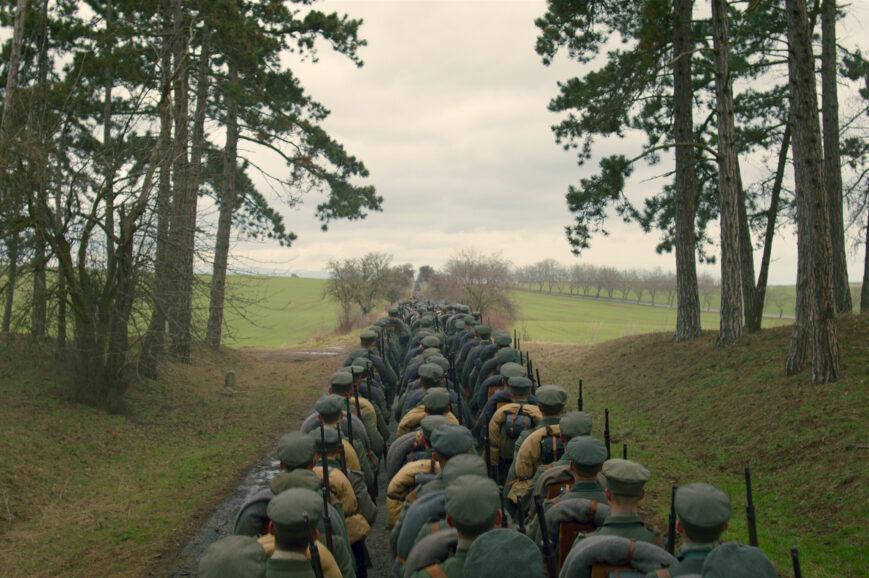
Although gravitating towards the original material’s translation on screen and other war movies, Friend avoided being creatively influenced by them because “if you’re retelling a story, your duty is to reinterpret, not carbon copy.”
War photography was an influence – “less so the photochemical kind of rendition of a photograph and more the truly shocking nature of how bodies were twisted and had a ragdoll-like quality to them. When you’re not looking at how the image is constructed, and more just the raw horror of it.”
Edward Berger being at the helm was a motivation for Friend to join the team, having collaborated with him on series Your Honour (2020) and Patrick Melrose (2018) and considering him “one of the most talented and passionate directors”. Berger first shared news of the project with Friend when they were shooting Your Honour in New Orleans. When he later revealed the film would be entirely in German, Friend’s initial reaction was of excitement to take on a “new creative challenge” as he barely spoke a word of German.
Camera operator Danny Bishop ACO Assoc. BSC SOC was also welcomed into the fold to continue their collaboration as a trio which began on Your Honour and Patrick Melrose. “You can’t put a currency on that shorthand,” says Friend. “It’s important to have the courage to challenge each other. 80% of the time we align in the way we think, but 20% of the time we call each other out if we think we have a better idea.”

The creative journey
Prior to the shoot in Prague, Berger and Friend analysed the script in forensic detail in a Berlin hotel suite during the height of COVID in November 2021. As Berger penned the script, the pair had creative licence to reengineer scenes if needed.
Friend and Berger had to shot list all the scenes so they could inform the other departments such as stunts, VFX and SFX what they required. “When I break down a scene, I like to visualise it within a space which wasn’t possible this time, as we didn’t have any sets or locations” says Friend. The battlefield, where many of the key sequences take place, was a blank canvas as the location yet to be selected and the ground hadn’t been excavated. Counter-intuitively Friend had to “retro fit” in his to approach the scene’s proposed blocking with Berger. “We had a solid plan that we could then deviate from when a required.”
Friend and Berger explored the visual language through an organic and creative collaboration, in agreement that having too many preconceived ideas can sometimes leave little room for “spontaneous happy accidents”. “I certainly don’t know how I want every scene to look, even on day one of the shoot. That language is something that I find during the journey”. They created concepts, examined light, and explored the motivation and realism behind each aspect of the story with Christian Goldbeck – “one of the most collaborative production designers” Friend has worked with who, elevates a cinematographer’s work because “he appreciates photography and gave us stunning sets with beautiful detail. We would talk about how I would approach the lighting and if I needed amendments. We would also mark out sets in the studio and create walls with boxes to simulate the spaces.”

Costume designer Lisy Chistl’s holistic approach and respect for the cinematographer’s role also propelled the project as they explored how costumes render in different light, from a cold snowy look to a candlelit look. “Our palette was restricted, being primarily the same colour costumes, skin tone, and mud, but ironically, you need to give it even more attention to keep it fresh and not let the audience’s eyes become desensitised,” says Friend.
For the film to be photoreal, immersive, convey the correct scale and achieve as much in camera, a suitable battleground location that was sympathetic to the sun path needed to be found in Prague. “The first option on a hillside would have been a nightmare to work on as it was at an awkward angle,” he adds. “We shot one scene there and it was a logistical nightmare. The sun path was far from ideal and the whole place would have needed to be excavated to make the location manageable.”
The location department then discovered an old Soviet airfield in Milovice which “faced perfect south, meaning you could stand at one end of the battlefield, completely central, and the sun would rise in front of you. You could shoot towards the south at midday, and be backlit, so you could track the sun with certainty.”

This was the only way to achieve continuity when plenty of smoke and atmosphere was being used. “When there’s hard sunlight coming through, followed by clouds, it’s more forgiving if you shoot backlit because at least your foreground shape is still relatively consistent and the light creating a rim light is what changes,” says Friend.
From scanning the location and taking aerial photographs, Friend discovered shots from one end of the vast space could be engineered so the north side of the battlefield could not be seen. “The location was always sympathetic to the light, direction, and action,” he adds. “We had our direction of travel and always knew the French trench was to the left, and the German trench to the right.”

Capturing with precision
When Bishop arrived in Berlin to explore what Berger and Friend had discussed in prep, it was clear they needed to determine how the camera could be manoeuvred with precision in the battlefield to produce the desired results. As Friend’s style is “quite close to the character and centre framed”, large pieces of kit would not be appropriate for the mud the crew would face. A wire cam system which would have required four large cranes on each side of the battlefield was considered as a way to move the camera in the harsh conditions. Testing in Berlin proved that while it was a fantastic tool, it would be too labour intensive and require time in programming to achieve the desired shots.
Valuable inspiration was provided by a talk delivered by Saving Private Ryan camera operators Mitch Dubin SOC ACO and Chris Haarhoff SOC which Bishop and Friend attended a few years prior. They revealed that when they started filming the Dunkirk beach scenes, conventional filmmaking quickly went out the window and the handheld style of the film was a result of needing to slim down their equipment organically.
“Although the handheld feel was not what we were aiming for the information they provided in the talk resonated with me, and I knew we had to reengineer our way of thinking, almost stripping everything back and starting again, simplifying it to the style of shot needed and the easiest way to achieve it,” says Bishop. “More than ever, James and I had to be prepped and know at every moment what was needed because this was a different ballgame.”
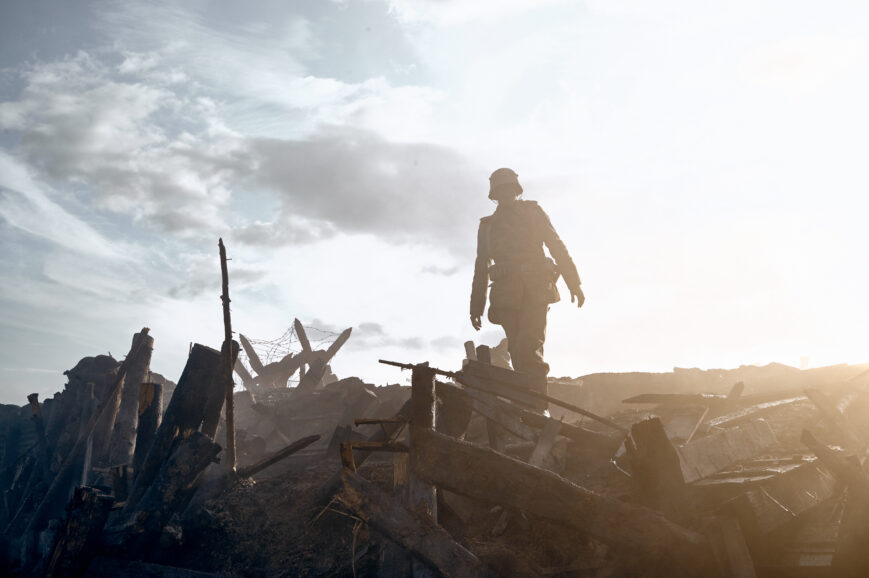
As All Quiet on the Western Front is the first film Berger, Friend, and Bishop have worked on as a trio they wanted to embrace equipment that would do justice to a story with such an important message.
Bishop initially questioned Friend’s suggestion to shoot purely on the Alexa 65 due to the manoeuvrability of the camera needed on the battlefield, so the pair shot comparison tests between the 65, LF, and XT at ARRI Rental in Uxbridge. “We also used a Stabileye – a wonderful piece of equipment Roger Deakins and Henry Braham have championed,” says Friend. “We took over ARRI for the day and caused chaos running around using flag arms as rifles and shooting a demo to see how we could move the camera.”
Projecting the results in a screening room at Barrandov Studios in Prague, confirmed the Alexa 65 would enhance certain aspects of the story as the principal camera, but they decided against shooting the whole film on it, appreciating “there are the right tools for the right jobs.” Friend, Bishop, and Berger went through the script, selecting sequences they thought would be best shot on the 65 – including some unlikely scenes such as Bäumer receiving his uniform – and which scenes should be captured using the Alexa Mini LF with the Stabileye. Very few battle scenes were shot on the 65, highlights Friend: “My instinct was to put the 65mm in a confined trench and open it up to the audience. It’s not just designed for vistas, it’s fantastic for portraits through to glorified muddy corridors – that’s where it comes to life.”

Disillusion of war
From the film’s more optimistic beginning which sees the group of friends in Germany, feeling hopeful about the war, through to the tragic events that followed, the composition largely did not change, predominantly adopting the same wide lenses and centre framing.
As shooting with a wider lens and close to the character’s face does not lend itself, especially with large-format photography, to multi-camera work, much of the film was shot single camera. “So, our natural process was to use the B camera team with Mark Rimmer operating the B camera and run them as a second unit, picking up shots and atmospheric vistas, also using them to shoot the early calls or night atmosphere shots. It was a great way of using two cameras whilst maintaining our visual style,” says Friend.
Conveying the disillusion of war remained paramount at all stages of the story. “As the saying goes, ‘War is young men dying and old men talking’ and that is what All Quiet is about – how the next generation were seduced to sign up and fight or die for their fatherland,” he adds.

The film’s opening was more representative of a young man’s perspective, shot on the Alexa 65 with a large field of view and it just felt right for the story, “so the visuals had to feel more optimistic. As the boys listen to the principal’s speech and are seduced in joining the war effort by the previous generation. It was shot as an exciting scene with plenty of energy, but it was one of the more heart-breaking to watch as you know all of the young men are being sent to their deaths and the ones who survived will never be the same again.”
Working alongside a supportive production team including line producer Mark Nolting and producer Malte Grunert, who “always wanted to give the filmmakers what they wanted and made decisions that were right for the project”, aided the smooth running of the project.
“We couldn’t have done it without ARRI’s support either because even though it was one of the biggest German productions, we didn’t have the resources to tackle the majority of the film on the 65,” says Friend. “ARRI wanted us to use it as much as we needed, to serve the story because that’s their ethos.”

The logistics of illuminating a large battlefield at night was one of the biggest obstacles and determined the Sony Venice being selected for night work due its dual ISO capability. A RED Weapon then captured the VFX work, with all cameras supplied by ARRI Rental.
“One of the main challenges of the night scenes was the sheer scale of the battlefield and lighting the environment to a responsible stop to photography the action. In the scene our characters are on guard duty, so you require an amount of visibility (and sometimes lack of) to the enemy trench for jeopardy. There was a danger of the battlefield turning into a black hole. The location we selected was a disused airfield, so was perfectly level and the runways circumnavigating the set which were ideal for lighting cranes and access vehicles,” says Friend.
The only way to tackle the space was a large amount of backlight and lay-flat tube emitting SFX smoke around the entire perimeter of the battlefield and a camera format that could react accordingly – Sony Venice at base 2500 and cranked to 3400 ASA when required with the noise reduction in the DI.
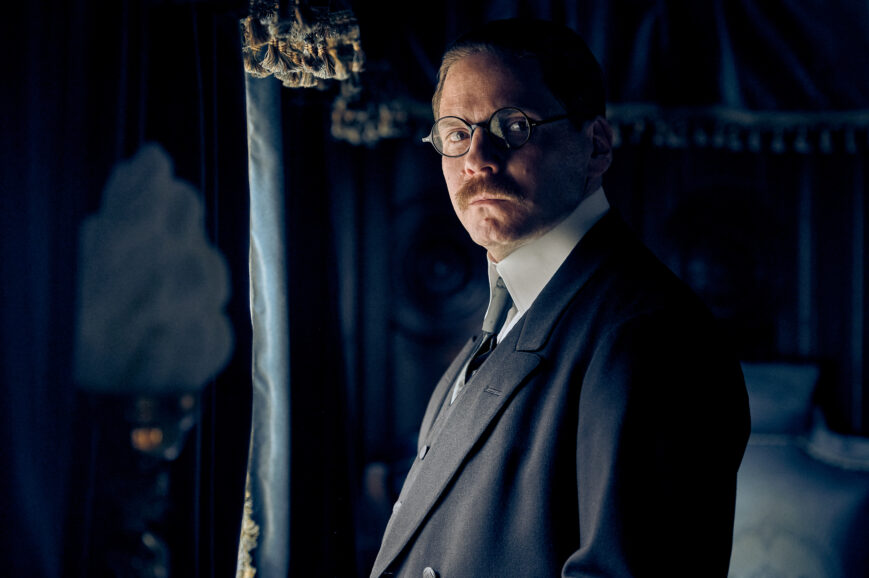
For lighting, Kafka and Friend had two diffused 18kw ARRI Maxes in the edge of the frame at the furthest point of the battlefield, cross backlighting the smoke to give create some sense of scale. Mixed with SFX spot fires along the length of the battlefield, the orange glow would complement the cool moonlight and aid with depth and perspective.
ARRI’s DNA lens were chosen for the majority of the film while all night work was shot with the Tribe7 Blackwing due to its speed. To achieve a slightly softer look in high contrast and bright environments, particularly for the opening sequences, Friend used the ARRI 65S 65mm large format lenses for the first time – an experience he “adored.” As there was not a wide enough DNA lens, ARRI detuned the edges of a 21mm Zeiss CP.3 to complement the set.

Pivoting the story
Aside from a few sequences which cut away to other central characters’ viewpoints, the story is experienced from protagonist Bäumer’s perspective. Orientating the audience through the narrative in this way and “choosing a character to lead the scene” is a technique that has proved successful on Friend, Bishop, and Berger’s previous productions.
When the soldiers ran across the battlefield, the camera was on their shoulder, capturing their point of view. “Or if you need to see their eyes, instead of the camera being further away amidst the chaos, Edward wanted it within a few feet of them, so the audience feel like they are also on the battlefield,” says Bishop.
Up until the week before filming began discussions were still taking place between heads of department to determine how best the crew and cast could access and move around the battleground and use the three service roads – which Bishop refers to as “swamps”, especially after a down pour and snow melting – leading to the battlefield. Moving the camera from one side of the field to another in the mud was demanding enough, let alone with precision, and following an actor. “Add to that the special effects and timings of explosions, and it was like the most challenging ballet,” says Friend. After considering putting down gravel or a track, the decision was made to run a roller over the premade roads, compounding the mud.

As it was deemed impractical to use a pursuit arm on the service roads, a 6×6 electric tracking vehicle with extreme torque was used. But even after testing all varieties of equipment – pursuit arms, wire cams, pneumatic posts – the best result was achieved by reverting to the most fundamental way of moving the camera – hand holding the equipment. “We had a 6×6 tracking vehicle with a grip sat on the back holding the Stabileye,” says Friend. “Not with vibration isolators, simply using their arms, with their bodies as stabilisation.”
Although, as Bishop highlights, taking the Stabileye to Prague for the entire shoot was a bold decision due to cost and need for a technician, it proved to be an essential piece of equipment, enhanced further by head Stabileye tech Peter Whitcombe, who had experience in a similar environment, having worked on 1917.
Fellow camera operator Peter Cavaciuti SOC ACO GBCT Assoc BSC’s advice was also of great value to Bishop when working in such demanding conditions, offering “gems of information we didn’t consider like having a jet pressure washer at the end of each set to clean mud off your shoes which saved so much time.”

The opening shots of the film – when German soldier Heinrich Gerber is introduced and an intense and action-packed battle scene commences – is a sequence Bishop is particularly proud of, admitting he had “never felt a pressure like it before” because any errors would require a 90-minute reset and rehearsals were often not possible.
“James and Ed shot listed everything, breaking that sequence down to three main shots. We talked about it for weeks and went down there to block it without any actors, working out how to move the camera over the muddy terrain,” says Bishop. “It was our first time on the battlefield and the first time we’d moved the camera in that way. From an operating point of view, in terms of scale, background, and all the extras, those were the most significant shots and took one day of rehearsals and two days to capture.”
Friend considers Bishop “the real engineer behind the shots” which he and Berger “had come up with in a hotel room, not knowing how they would be possible.” Above all else, Bishop felt privileged to have been given such a platform. “You always want your next job to be bigger than your last, and this was another step up,” he says. “It was a luxury to really deconstruct a shot. James, Ed and I would talk about it in depth, and I’d show him how I could move the camera to achieve what they wanted.”

A few days before filming, tests still had not been carried out to determine how the opening shots would be accomplished using all pieces of equipment, including an Hexatron tracking vehicle to carry the crane. “Danny and I couldn’t have slept without seeing that shot before filming and I cannot articulate the relief when we discovered we had the test day – working with the Ronin due to the limited availability of the Stabileye and technician – to figure out how long it would take to get the vehicle in place and choreograph the stunt teams running around with the grips,” says Friend.
The camera moved through the trenches on the Stabileye establishing them and then when Gerber emerges from the trenches for the first time, the crane came down to pick the Stabileye off the grips. As Gerber climbs up, the crane pulled the camera up and two more grips took it at the top of the trench. “To make that shot happen, it starts with James and I, but then there are about eight grips positioned separately and the focus puller. It’s a real team effort,” says Bishop. “Even on a shot like that, we were with the character, three feet away, which is very hard to maintain when you’re running through a battlefield, shooting at a deeper stop to maintain focus.
“One of the joys of working with a director like Ed on shots like that is that he wants to make it perfect. As we came up out of the trench there was a two-second window to get the Stabileye off the crane when Gerber falls down, effectively a dead spot, so I asked if we could put in an explosion. Ed was brilliant, as always, and understood what we needed to tell the story.”
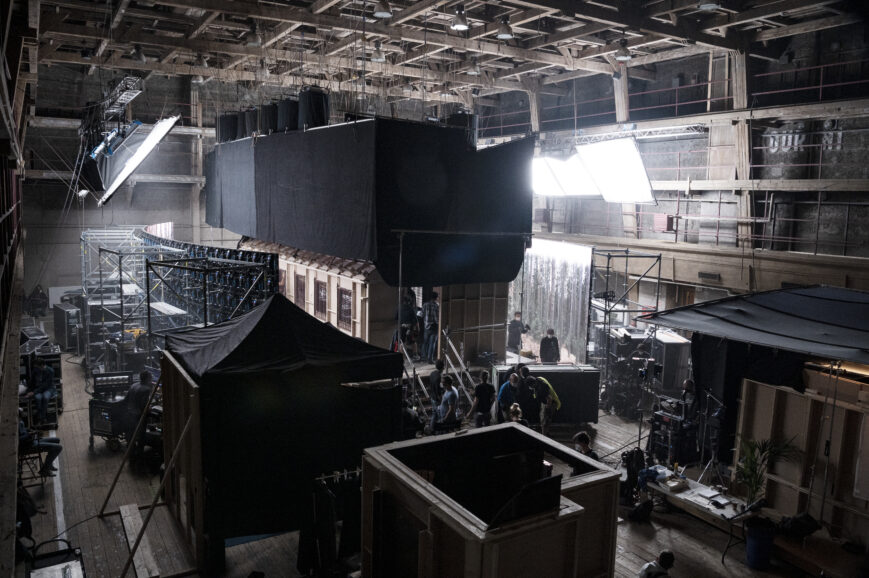
Enhanced naturalism
Already a fan of incorporating natural light, Friend has adopted “enhanced naturalism” in recent years. “I even consider shooting a night exterior in the street as naturalism because you’re working from a pre-existing environment. When filming a night scene, I always like to see the environment at night because the canvas completely changes in the day, and you can manipulate it accordingly.”
Daniel Kafka, a Prague-based “incredibly collaborative” gaffer who was highly recommended to Friend, helped accomplish the enhanced naturalism. They aimed to shoot as many scenes in cloud cover as possible because direct sunlight did not feel appropriate for much of the story and because the narrative unfolds over multiple seasons and years. Every night-time scene also needed to be as realistic as possible whilst avoiding the moonlight work resembling classic Hollywood moonlight.
Illuminating the vast battlefield at night also required one of the biggest cranes in Europe and creating a huge soft box floating over the set using 80 SkyPanels in a frame to diffuse the light. Friend worked with the ARRI Orbiter which was soon to be released and features a sensor on the lamp to read the colour and frequency of light.

“We fired a flare up in the air and told the Orbiter to read the colour and frequency of the flare because, being a photochemical reaction, it’s hard to replicate with an LED lamp,” says Friend, who took the data and put it through the desk and to the soft box of SkyPanels. “This enabled us to look one way over the character’s shoulders, and see a flare in the background, lighting the whole set. When shooting the answering angle back on our leads, you wouldn’t necessarily want to light them with a flare because the light is inconsistent and uncontrollable. The Orbiter allowed us to replicate the light with the enormous soft box and achieve the right colour flicker.”
Demanding night-time scenes lit by flares were another motivation for shooting on the light sensitive Sony Venice. During prep, Friend shot tests on the battlefield, with the perimeter surrounded with layflat tubing, before haze and smoke was created and the special effects department who fired flares in the air, so Friend could determine where he wanted them within the shot.

“These camera tests, lit with nothing other than smoke and flares, made it into the final film,” says Friend. “They were exactly what we wanted, but because I didn’t expect them to make the final cut, I lit the scene with a cool base of moonlight which, combined with the warmer light of the flare, was something I may not normally have done.”
Kafka also built bespoke thin-profile helium balloons with Astera Titan Tubes inside to achieve dynamic lighting in challenging or sensitive locations such as palaces. Being a fan of LED’s versatility and quality, Friend deemed this a natural choice when working in low-light candlelit environments. “Dimming tungsten right down would produce a light that is too aggressively red whereas LED enables you to work at a lower level and more responsible stop, cutting through the candlelight whilst controlling the colour,” he says. “As the fixtures were inside the balloon, a beautiful generous and soft quality of light was created on the cast.”

Championing collaborators
Collaborating with Bishop enabled Friend – who champions camera operators and considers Bishop the “co-captain” of their department – to achieve his best work. “We’re all telling the story together,” he says. “I couldn’t do it without Danny, and it’s never been more apparent than on this project that we’re only as strong as our teams.”
Bishop highlights the additional hours Friend dedicated to guarantee the production was triumphant: “We’d film during the day, and because it was a single camera shoot, B camera operator Mark Rimmer would be ready to capture the night atomospheric shots. I’d go back to the hotel after an 11-hour day, and James would continue filming the night work.”
As filming took place at the pandemic’s peak, it was not possible to fly home throughout the 15 weeks of shooting, which, with prep time, amounted to around eight months away from home. “As well as the difficult shooting conditions, there was anxiety around not being able to return home,” says Friend. “Trying to give your focus to a project requiring all your dedication with a worldwide pandemic in the background made you feel kind of hopeless.”

For him, the success of the film was a result of the “pure passion that runs through all filmmakers who take craft seriously. From our lighting team through to our camera crew including camera trainee Radka Filipská and B camera first assistant Filip Sturmankin – they were all flawless.
“Just some of the other unsung heroes are the grips – key grip Matt Budd and Czech key grip Michal “Schala” Heršálek. Schala’s a fearless master craftsman who’s become one of the most important people on the film. It’s hard to go to a country and collaborate under pressure, but our team was staggering. It was the closest I’ve been to being in battle and I wouldn’t want to do it with anyone else.”

The producers’ commitment to the project was also essential, particularly when unplanned snowfall elevated a sequence featuring soldiers Bäumer and Stanislaus ‘Kat’ Katczinsky (Albrecht Schuch) standing against a farmhouse wall to become one of Friend and Bishop’s favourite sequences. “The producers arranged for special effects company Snow Business to cake the vast area in snow for continuity in the scenes that followed the next day,” Bishop says. “Instead of re-shooting it, they embraced it, and it’s one of the most poetic and powerful scenes.”
Friend also witnessed the same commitment and passion from lead actor Felix Kammerer (Paul Bäumer). “He has a theatre background, so this was his first film, and he has an incredibly exciting future. Felix is one of the finest performers I’ve had the pleasure of working with. His performance not only made you experience the entire range of emotions, I also never heard him complain.”

As well as being the most challenging film Bishop and Friend have worked on, it taught them the most. “We were exhausted at the end of each day but would be buzzing to go again the next morning because creatively it was the dream,” says Bishop. “We’ve worked so hard to get where we are in our careers, so to tell this story in these conditions gave us the creative drive.”
A faithful representation
While finding a visual language that looked fresh and different to other war movies was important the filmmakers needed to stay true to the period. This meant the colour would be dictated by the light, costume, skin tone, set and environment the story takes place in. “For instance, most soldiers fighting in that region at that time were Caucasian, and wore a certain colour uniform,” says Friend. “Every costume designer will be as faithful to that as possible because if it looked too colourful it wouldn’t be right for the story.”

Learning to let go and “just let the film exist in its own space and find its own language” was a significant part of this learning curve and a process of visual discovery that was assisted by Company 3 colourist Andrew Daniel (Rillington Place, Patrick Melrose) who Friend has worked with for a decade. “Unlike our last film where we created about 13 LUTs, we only worked with one daytime and one night-time LUT for this project,” says Friend. “The DI and grade were learning experiences in themselves. That’s what I love about the DI – it’s not set in stone; it evolves and builds.”
Frank Petzold, a VFX supervisor Friend refers to as a “true captain with infectious enthusiasm” was also intrinsic to the visual development and attended every day of the grade. Despite having finished colour timing, elements of the visual effects were still being refined because it was the first time many of the team had sat down together watching the final film. “There was this incredible relationship between Ed, Frank, Andrew, and I. Frank would then instruct his wonderful team to add more smoke, debris or blood or darken the sky,” says Friend. “They were sometimes longer days than a lot of those on set, but they were some of the most creatively satisfying.”
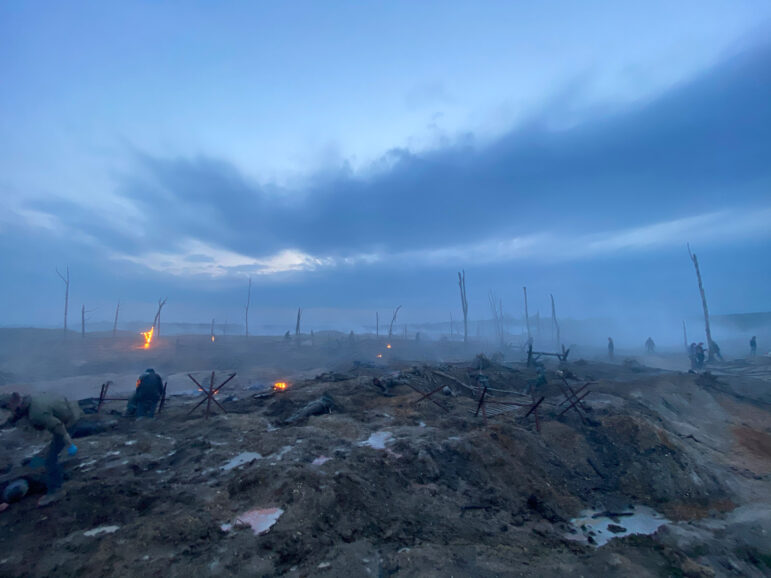
Soldiering on
Like many filmmakers, Bishop’s role has required him shoot upsetting and uncomfortable scenes, but some he captured for All Quiet on the Western Front made an impression unlike any other. “It was incredibly hard filming people being set on fire partly because it really happened in history. You’re breathing in flare smoke and watching people being burnt alive and thinking, we’re not just making a movie, we’re actually showing what took place.”
The support of fellow filmmakers was more essential than ever when filming such hard-hitting scenes in demanding conditions. “You’re contending with the mud and concentrating on operating while explosions are going off and our cast were often stood in water in the trenches in temperatures of -10 degrees,” he adds. “It’s hard to imagine working on a harder film.”

Feeling a real need to draw on the experience of others, the camera operator contacted peers for advice, something he has rarely done in the past. “I was emotionally struggling with a difficult shot, and I messaged camera operator Pete Robinson in between takes saying, ‘I’m sat here, and I feel really isolated and lonely because there’s so much pressure to get it right due to the resets. Do you ever feel like that?’ And he replied, ‘Yes, I feel like that all the time.’ That was reassuring to hear from somebody like Pete who has done everything.”
Friend similarly found advice from the cinematography community a great help as it was not just the creative anxiety about the subject matter being filmed, but the pressures of production and how much was riding on every shot.
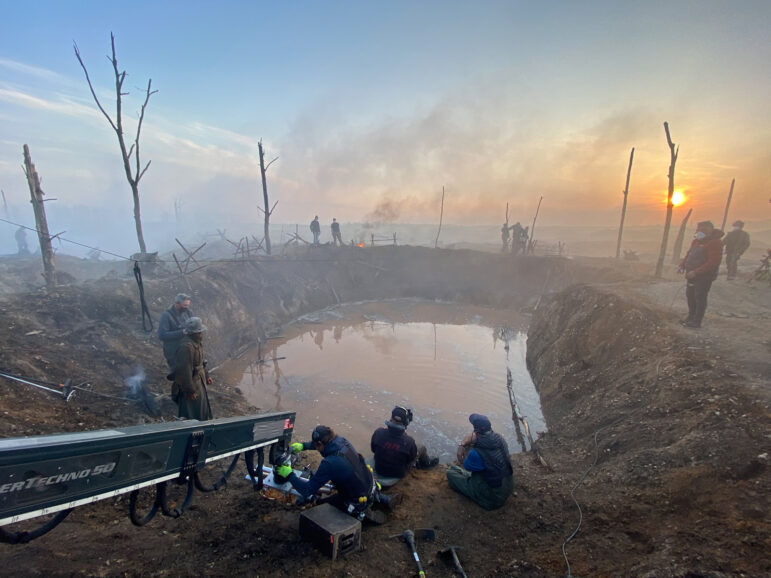
“When I spoke to the late great Paul Wheeler BSC on the first few days of principal photography and mentioned we were really up against it, I found drawing on his experience invaluable. I received the news he had passed away during shooting and as he’s always been a great champion of my career, I’d like to dedicate the film to him,” he says. “Phil Méheux BSC, who is so experienced in the realms of Hollywood, would also recentre me and help me to carry on when things got tough during the shoot.”
During a demanding day of Stabileye testing and whilst knee deep in mud, the cinematographer received a message of encouragement from Mike Southon BSC. “Even the smallest thing can help you carry on. That’s what I love about the society. It imbues members with the support and knowledge of all other members, so you feel you’ve got a safety net. When you’re making a movie that’s not conventional, and you’ve not been in a situation before, it’s important to feel you can call people who have done similar things to ask their advice.”

Bishop agrees that is also one of the strengths of organisations like the BSC and ACO: “This film has taught me that if somebody was to call me asking for advice about a challenging production, it would be a privilege to help, and I would take the time to talk to them. Sometimes you just want somebody to tell you it’s going to be okay.”













